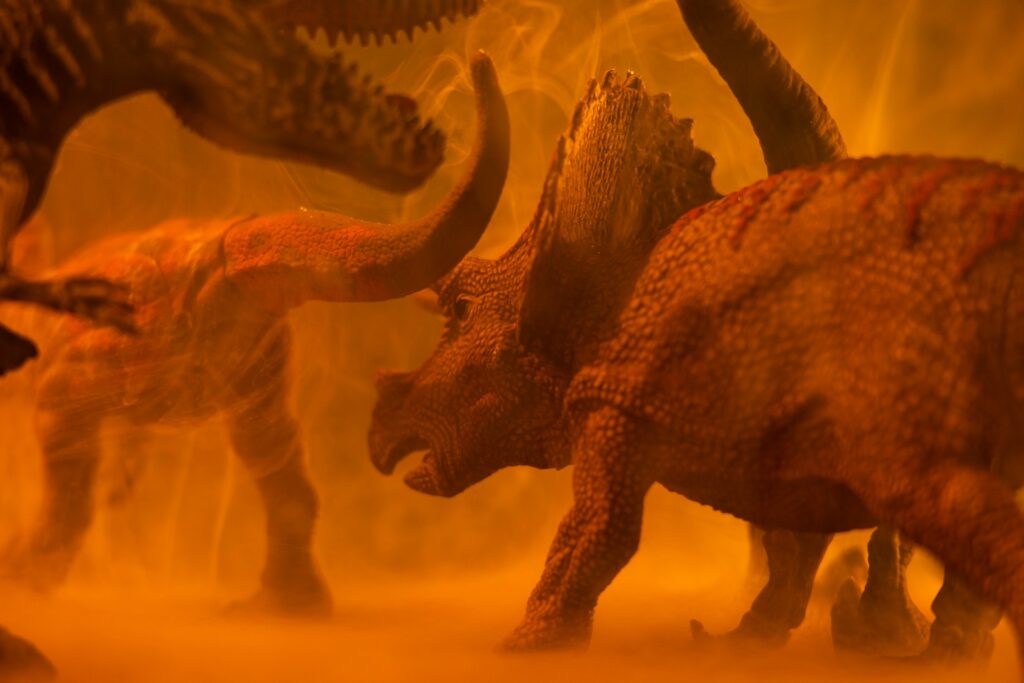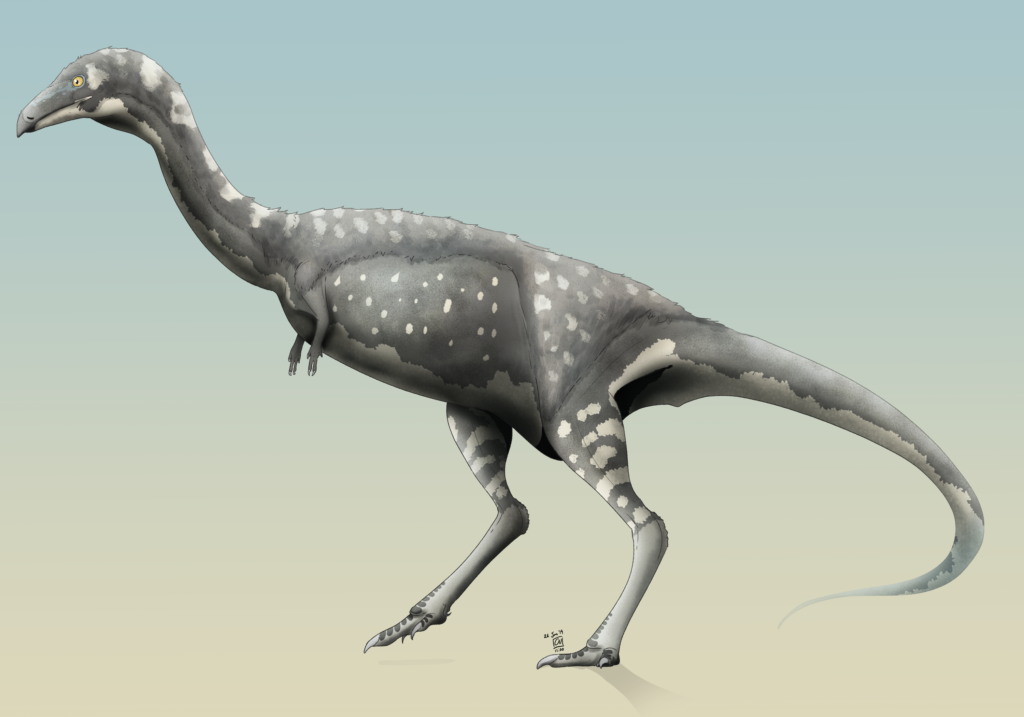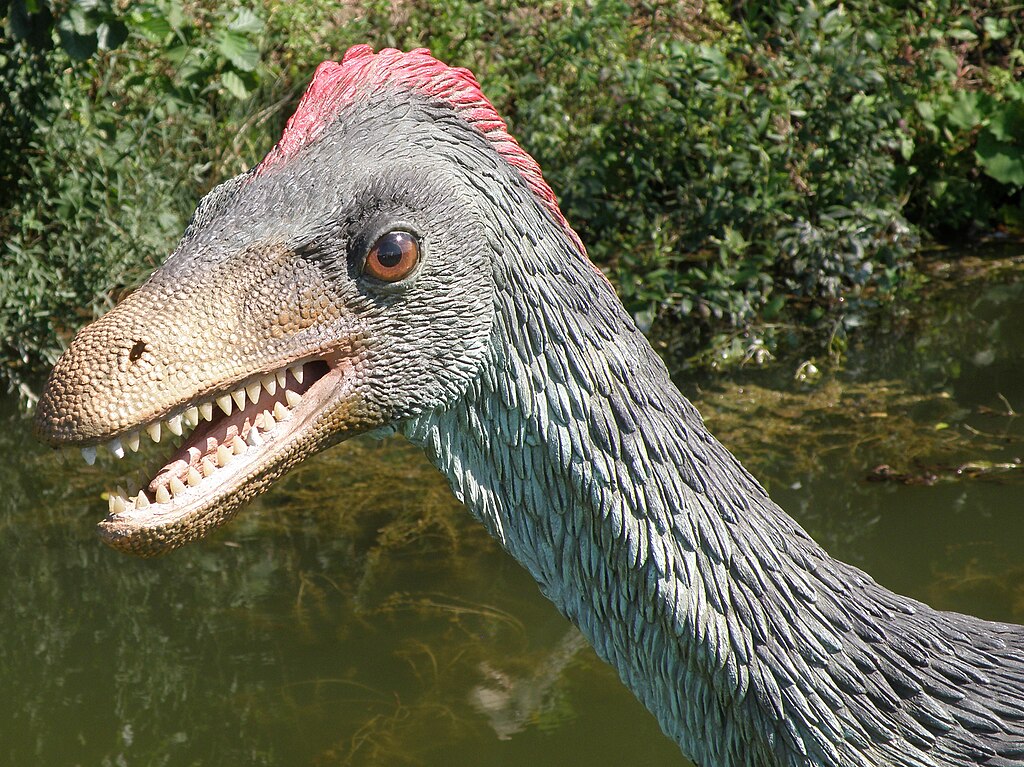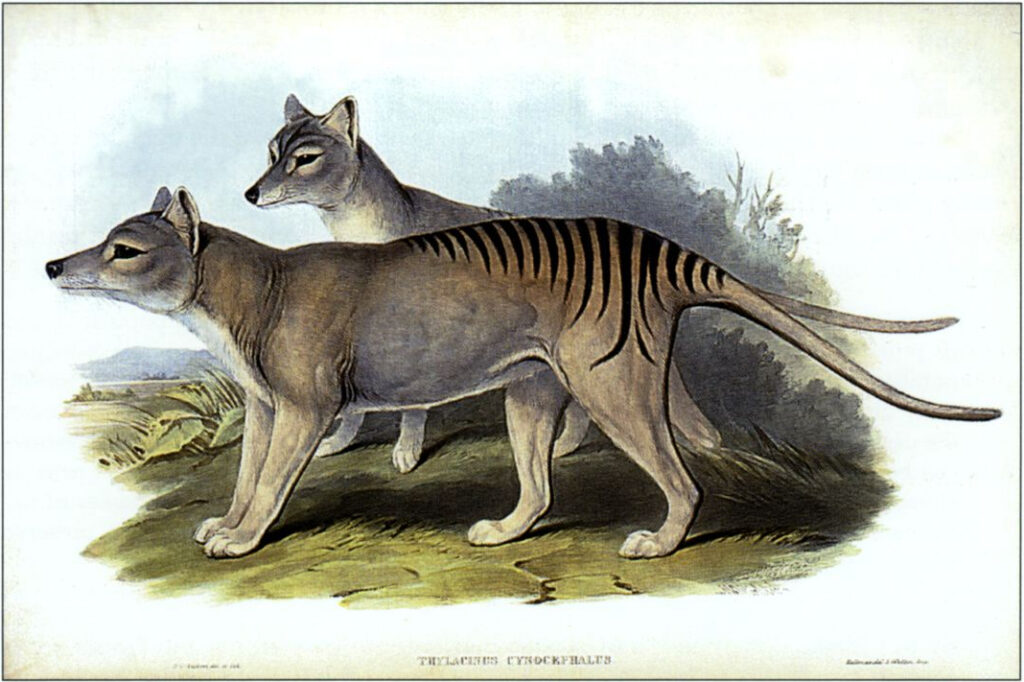Dinosaurs have captivated human imagination since the first fossils were scientifically described in the early 19th century. This fascination has spawned countless books, movies, toys, and perhaps most notably for collectors – trading cards and collectibles. The intersection of paleontology and collectible culture has created a vibrant market where enthusiasts can own a piece of prehistoric wonder, albeit in cardboard or plastic form. From educational series that teach children about Earth’s ancient rulers to high-value collectibles sought by serious investors, dinosaur-themed trading cards and collectibles represent a unique hobby that bridges science and entertainment. This article explores the most significant and sought-after dinosaur-based collectibles that have roared into the hearts and collections of enthusiasts worldwide.
The Dinosaurs Attack! Trading Cards Phenomenon

Released by Topps in 1988, “Dinosaurs Attack!” trading cards quickly became infamous for their graphic, over-the-top depictions of dinosaurs wreaking havoc on modern civilization. The 55-card set featured striking artwork by Herb Trimpe and Earl Norem that showed dinosaurs devouring people, destroying landmarks, and generally causing mayhem in contemporary settings. Despite (or perhaps because of) controversy over their violent imagery, these cards developed a cult following that persists today. Complete sets in mint condition can fetch hundreds of dollars at auction, with particularly well-preserved individual cards commanding premium prices from dedicated collectors. The series even inspired a planned film adaptation by Tim Burton, which unfortunately never materialized but speaks to the cultural impact these trading cards had on popular culture.
Jurassic Park: The Trading Card Revolution

The release of Steven Spielberg’s groundbreaking film Jurassic Park in 1993 triggered a dinosaur renaissance in popular culture, and the accompanying trading cards became instant collectibles. Released by Topps, these cards featured stills from the movie, behind-the-scenes information, and fascinating dinosaur facts that educated collectors while celebrating the film. The base set contained 88 cards, but more valuable were the various insert cards and chase cards that became highly sought after by collectors. Holographic cards showing the T-Rex and Velociraptors remain particularly coveted items, with pristine examples selling for significant sums at specialty auctions. With each subsequent film release in the franchise, new card sets have been produced, creating a multi-decade collecting opportunity that spans numerous art styles and production techniques.
Dinosaur King Trading Card Game

The “Dinosaur King” trading card game, launched by Sega in 2008, combined collectible cards with competitive gameplay in a format that appealed to younger collectors. Based on the animated series of the same name, this TCG allowed players to collect cards representing different dinosaurs and use them in strategic battles against other players. Each card featured detailed illustrations and statistics about the dinosaur’s abilities, creating both a collectible item and an educational tool. The game’s combination of vibrant artwork, dinosaur facts, and strategic gameplay made it particularly popular among children aged 6-12. Special edition cards featuring holographic images or rare dinosaur species became the most valuable in the secondary market, sometimes selling for ten times their original retail price. Despite production ending in 2014, dedicated communities of players and collectors continue to trade and compete with these cards.
Genuine Fossil Cards: Where Collectibles Meet Paleontology

Among the most unique dinosaur collectibles are trading cards that contain actual fossil fragments embedded within them. Companies like Fossil Cards and Upper Deck have released limited edition sets that include slivers of genuine dinosaur fossils, typically bone fragments from more common specimens. These cards typically come with certificates of authenticity and information about the species and location where the fossil was discovered. While controversial among some paleontologists who worry about the commercialization of scientific specimens, these cards represent a tangible connection to prehistoric creatures that many collectors find irresistible. Cards containing rarer fossil specimens, such as those from carnivorous dinosaurs like Tyrannosaurus or Spinosaurus, command the highest prices and are often displayed in protective cases rather than handled or traded. The educational value of these cards is significant, as each typically includes detailed information about the dinosaur’s habitat, diet, and physical characteristics.
The Magic: The Gathering Dinosaur Explosion

While not exclusively dinosaur-focused, Magic: The Gathering introduced a significant dinosaur theme in its “Ixalan” set released in 2017, creating highly collectible dinosaur cards within the world’s most popular trading card game. The set featured powerful dinosaur creatures with vibrant artwork and game mechanics that reflected their presumed behaviors and abilities. Cards like “Gishath, Sun’s Avatar” and “Ghalta, Primal Hunger” became instant favorites among collectors and players alike, with foil versions and special editions becoming particularly valuable. The popularity of these dinosaur cards prompted Wizards of the Coast to include more dinosaurs in subsequent sets, establishing dinosaurs as a recurring creature type within the game. Professional artists, including Zoltan Boros and Even Amundsen, created memorable dinosaur illustrations that blended fantasy elements with scientifically informed anatomy, making these cards appealing to both paleontology enthusiasts and fantasy art collectors.
Dinosaur Figurine Collectibles: The Dinotoys Series

Beyond trading cards, the Dinotoys collectible figurine series has become one of the most comprehensive dinosaur collectible lines ever produced. Launched in the early 2000s, this series focuses on scientifically accurate representations of dinosaurs, with each model meticulously designed based on the latest paleontological findings. The collectibles range from common species like Triceratops and Stegosaurus to obscure dinosaurs that appeal to serious enthusiasts and educators. Each figurine comes with a companion card detailing the dinosaur’s scientific classification, era, diet, and interesting facts about its discovery or behavior. Limited edition releases, often featuring newly discovered species or updated interpretations of known dinosaurs, typically sell out quickly and appreciate. Many collectors appreciate the educational value of these figurines, which often incorporate recent scientific discoveries about feathering, coloration, and posture that aren’t reflected in older dinosaur toys.
Vintage Sinclair Oil Dinosaur Cards

Some of the earliest and most historically significant dinosaur collectibles were the promotional cards distributed by Sinclair Oil Corporation beginning in the 1930s. Sinclair, which used a Brontosaurus (now called Apatosaurus) as its logo, produced beautifully illustrated cards featuring various dinosaurs as part of its marketing campaigns. These cards were distributed at service stations across America and educated generations about prehistoric life while building brand loyalty. The artistic style reflects the paleontological understanding of the era, making them interesting historical artifacts that show how our perception of dinosaurs has evolved. Original Sinclair dinosaur cards from the 1930s and 1940s are now considered vintage treasures, with complete sets in good condition fetching substantial prices from both dinosaur enthusiasts and advertising memorabilia collectors. The cultural impact of these cards was significant, as they introduced many Americans to dinosaurs long before museums became widely accessible or dinosaur toys became commonplace.
Pokémon’s Fossil Pokémon Cards

The Pokémon Trading Card Game has incorporated dinosaur-inspired designs since its inception, with the “Fossil” expansion in 1999 explicitly focusing on prehistoric creatures. Cards featuring Pokémon like Aerodactyl (based on Pterodactyls), Kabutops (inspired by Trilobites), and Tyrantrum (modeled after Tyrannosaurus Rex) have become highly collectible, especially first-edition prints and holographic variants. These cards blend creative fantasy designs with recognizable dinosaur characteristics, appealing to both Pokémon fans and dinosaur enthusiasts. The artistic evolution of these cards across different sets and generations reflects changing artistic styles and scientific understanding of prehistoric creatures. Particularly rare variants, such as “shiny” versions or limited promotional releases, can command prices in the thousands of dollars from serious collectors. The ongoing popularity of dinosaur-inspired Pokémon ensures that new collectible cards featuring prehistoric designs continue to be released, maintaining a steady stream of new items for collectors to pursue.
3D Collector Cards with Augmented Reality

The latest evolution in dinosaur collectibles leverages augmented reality technology to bring prehistoric creatures to life through smartphone apps. Companies like Dino Dana, Jurassic World, and National Geographic have released trading card sets that, when scanned with a companion app, generate interactive 3D dinosaurs that appear to exist in the real world through the phone’s camera. These cards combine traditional collecting with cutting-edge technology, offering an interactive experience beyond what traditional cards can provide. Each card typically contains QR codes or special markers that trigger specific dinosaur models, animations, and educational content within the app. Limited edition cards often feature rarer dinosaurs or special animations that make them particularly desirable among tech-savvy collectors. The educational potential of these augmented reality cards is significant, as they allow children to observe dinosaur movements, relative sizes, and behaviors in a way that static images cannot convey.
Educational Dinosaur Card Sets from Museums

Major natural history museums around the world have created their own dinosaur trading card sets as educational tools and fundraising merchandise. The American Museum of Natural History, London’s Natural History Museum, and the Royal Tyrrell Museum have all produced collectible card sets featuring high-quality photographs of their fossil collections alongside scientific information. These museum-produced cards are valued for their scientific accuracy and educational content, often including the latest paleontological findings and theories. Limited production runs make these cards particularly collectible, especially those featuring famous specimens like “Sue” the T-Rex or newly discovered species. Collectors appreciate that proceeds from these cards typically support scientific research and museum operations, adding a philanthropic dimension to the hobby. Special edition sets released to commemorate new exhibits or significant discoveries become instant collector’s items, particularly when signed by prominent paleontologists or museum curators.
Craft and Homemade Dinosaur Collectibles

The rise of online marketplaces like Etsy has created a boom in artisanal, handcrafted dinosaur collectibles made by independent artists and craftspeople. These include hand-painted collector cards, limited edition prints, hand-sculpted miniatures, and mixed media collectibles that combine multiple materials and techniques. Many collectors value these items for their uniqueness, craftsmanship, and direct connection to the artist, which mass-produced collectibles lack. Artisanal collectibles often incorporate innovative materials like wood, fabric, or recycled components that provide texture and dimension beyond what commercial products offer. Limited production numbers—sometimes as few as 10-20 pieces—make these handcrafted items naturally scarce and potentially valuable to collectors seeking distinctive pieces. The personal touch of handmade collectibles, often including the artist’s signature or individual numbering, adds provenance and authenticity that many collectors find appealing in an increasingly digital world.
Investment-Grade Dinosaur Collectibles

For serious collectors, certain dinosaur-themed trading cards and collectibles have transcended hobby status to become legitimate investment assets. Particularly rare items, such as prototype cards that were never mass-produced, artist proof cards, error cards with printing mistakes, or items signed by significant figures in paleontology or entertainment, can command extraordinary prices in specialist auctions. Investment-focused collectors typically store these high-value items in museum-quality preservation cases with controlled temperature and humidity to maintain their condition over decades. Authentication services like PSA and BGS have developed specific grading scales for dinosaur collectibles that help establish market values and protect buyers from counterfeits. The most valuable dinosaur collectibles often have documented provenance tracing their history through various collections, adding to their mystique and value. Investment advisors have noted that certain dinosaur collectibles have outperformed traditional investments like stocks or bonds over comparable periods, though the market remains relatively specialized and can be volatile.
The Future of Dinosaur Collectibles

The dinosaur collectible market continues to evolve with technological advancements and changing collector interests. Emerging technologies like NFTs (Non-Fungible Tokens) have begun to create digital dinosaur collectibles that exist exclusively in virtual spaces but can command real-world prices comparable to physical collectibles. Subscription-based models are gaining popularity, with companies offering curated monthly dinosaur collectible deliveries that build into comprehensive collections over time. Environmental concerns are driving innovation in sustainable collectibles, with some companies now producing biodegradable trading cards or using recycled materials in their dinosaur figurines. The increasing participation of professional paleontologists in the design and scientific verification of collectibles is raising the educational value and accuracy of modern dinosaur products. As new dinosaur species continue to be discovered at a rate of approximately 15 per year, the potential for new and exciting collectibles remains boundless, ensuring this hobby will continue to thrive among both children discovering dinosaurs for the first time and adults who never outgrew their prehistoric fascination.
Conclusion

Dinosaur-based trading cards and collectibles represent a unique intersection of science, art, entertainment, and collecting culture. From vintage oil company promotions to cutting-edge augmented reality experiences, these items satisfy our enduring fascination with prehistoric life while offering both educational value and investment potential. Whether motivated by nostalgia, scientific interest, artistic appreciation, or financial speculation, collectors of all ages continue to be drawn to these tangible connections to Earth’s ancient past. As paleontological knowledge advances and production technologies evolve, the world of dinosaur collectibles promises to remain as dynamic as the creatures that inspire it, ensuring these prehistoric beasts maintain their powerful grip on human imagination for generations to come.




